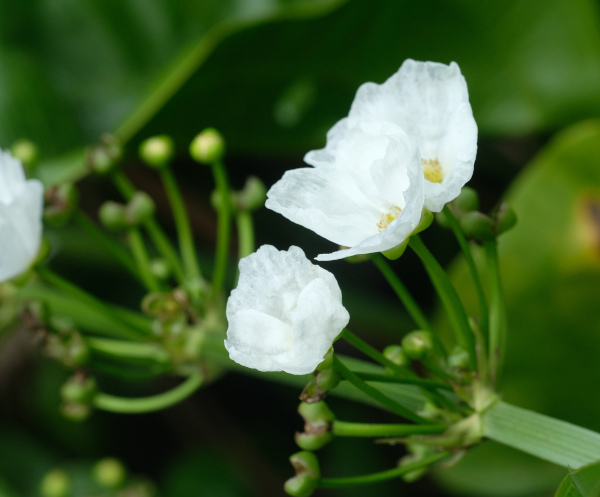How to grow Sagittaria
Sagittaria sagittifolia is a marginal aquatic plant takes both its Latin and common names from the form of its emergent leaves, which are distinctly arrow shaped. Sagittaria comes from the Latin ‘Sagittarius’ – which translates as ‘pertaining to arrows’.
These herbaceous perennials are just perfect for planting at the edge of ponds and bogs. Beautiful, white flowers around 3cm across, with dark purple centres, are held in whorled racemes through July and August, attracting the bees and butterflies to your garden.
Native to wetlands of Europe, including Ireland and Portugal, Sagittaria sagittifolia is the only one of the Alismataceae family which is native to Britain. Known commonly as 'Old World Arrowhead', its bright green, angled leaves are held on long stalks, around 45cm above the level of the water. The leaves which are submerged are longer and thinner.
Sagittaria sagittifolia is an herbaceous, tuberous perennial which grows up to 80cm tall and is hardy to -20°C (H6). Plants prefer a sunny position with any aspect other than north facing, though they will also tolerate partial shade. Soil wise a muddy spot in still or very slow moving water between 10-50cm deep is ideal. Clumps will spread from 50-100cm.
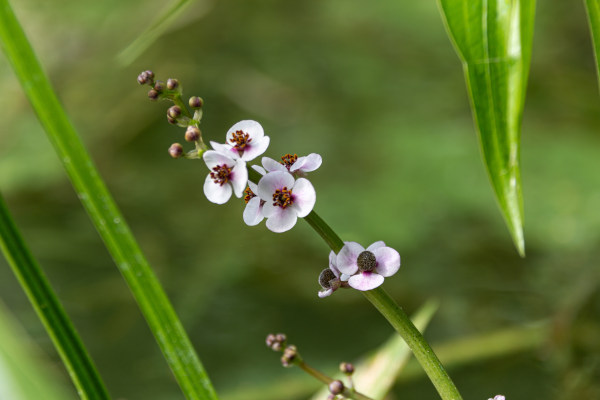
Zantedeschia is a genus of flowering plants from the family Araceae and is native to southern Africa. With a rich history dating back to the Ancient Romans, these deciduous or semi-evergreen perennials have been used as a symbol of celebration. Zantedeschia was Named after Professor Giovanni Zantedeschia, an Italian botanist.
There are two main forms of Zantedeschia: hardy and tender. Hardy forms of the plant can be grown outdoors, enjoy moist soil and full sun or partially shaded conditions - these are known as Arum lilies. Tender forms of Zantedeschia prefer being grown in containers or pots and should be brought inside over the winter - these are known as Calla lilies.
With tuberous flora in all colours from whites, yellows and oranges to deep reds and purples, Zantedeschias are not to be overlooked in any garden, as long as they have sufficient sunlight to grow in.
Ready to learn more about growing Zantedeschia? Read on for all there is to know...

Key Information
Soil pH
Position
Hardiness

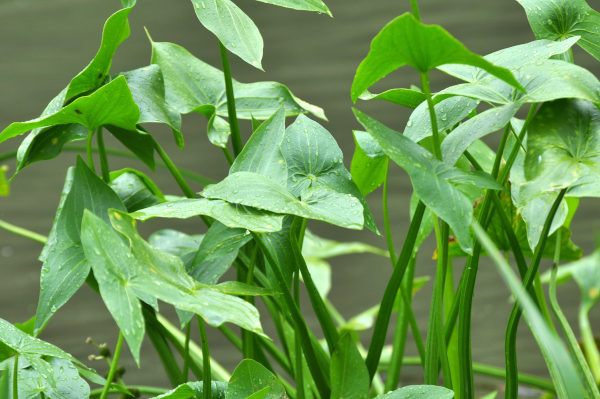
Where & when to plant Sagittaria
Position - Full sun or partial shade of any aspect other than north facing.
Soil - Loam, clay or aquatic wet soil.
Flowering Period - July to August
Hardiness - H6 (-15 to -20°C)
Best planted at start of the growing season in spring, when Sagittaria sagittifolia is generally sold as bare roots/tubers. Later in the year plants are available in containers and the hardiness of these plants means they can, realistically, be planted at any time provided the ground or pond is not frozen.
It is noteworthy that early spring to late summer is also the best time to create a bog garden as the roots have time to get established. In the autumn, when food starts to become scarcer, they have more chance of being eaten. Just ensure that soil is permanently wet if planting in the ground and that you use an appropriate basket and soil if planting in on the top tier of the pond. A generous supply of sunshine is needed for plants to flower. Ideal for ponds, wildlife gardens and bog gardens.
How to plant Sagittaria
If planting in the ground, ensure the soil is permanently wet. For pond planting place in a shallow square aquatic basket no deeper than a maximum of 20cm down.
For pond planting
- Drape the roots into an appropriately sized aquatic basket then backfill with aquatic compost and lightly firm down
- Top the basket with gravel to prevent soil being dissolved then water well
- Lower gently into the pond with the growing spikes pointing up and covered by no more than 3cm soil on top. Where necessary utilise smooth bricks to adjust the plant’s level so that it sits on the surface of the pond.
- Bear in mind plants will spread out by 1m so are not really suitable for very small ponds.
- Position in water up to a maximum of 20cm deep or grow in muddy pool margins
- A site with full sun is ideal and will encourage more flowers; partial shade will mean less blooms.
For bog garden planting
- Dig the soil area removing any large stones and weeds and breaking up any lumps
- Add some organic matter such as manure or garden compost to enrich to soil
- Drape the roots and tubers over the soil then backfill and lightly firm down
- Rake level and firm with your heels. Rake level again
- Water plants in well to ensure an even distribution of moisture levels and monitor to ensure soil remains permanently wet, even in times of drought
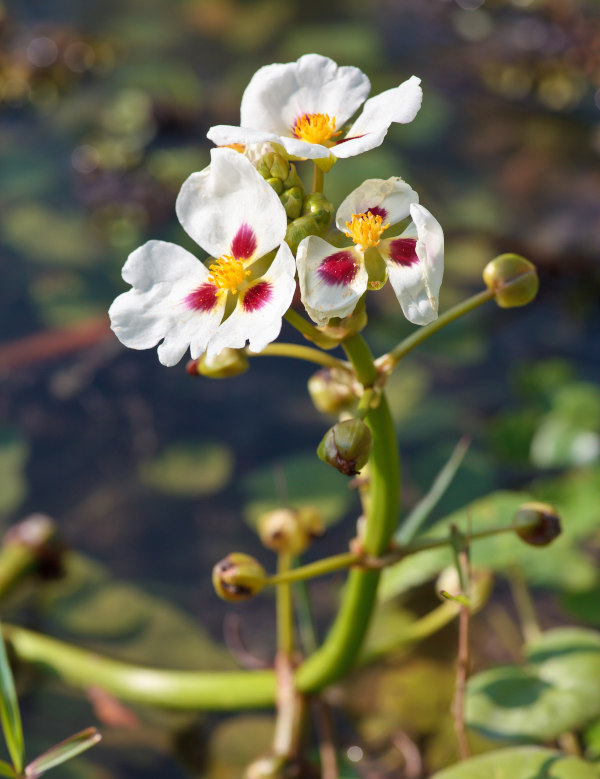
What to plant with Sagittaria
If planting in a pond, then arum lily, Myosotis scorpioides Semperflorens (water forget-me-not) and Gunnera magellanica (Devil’s strawberry) will enhance the surface of your pond, alongside the less invasive Typha minima for the beautiful impact of bulrushes. In bog gardens Asarum caudatum will do well at the drier edges whilst astilbe, primula and erythronium all like a spot at the edge of a pond, alongside ferns and, perhaps, Astilboides tabularis.
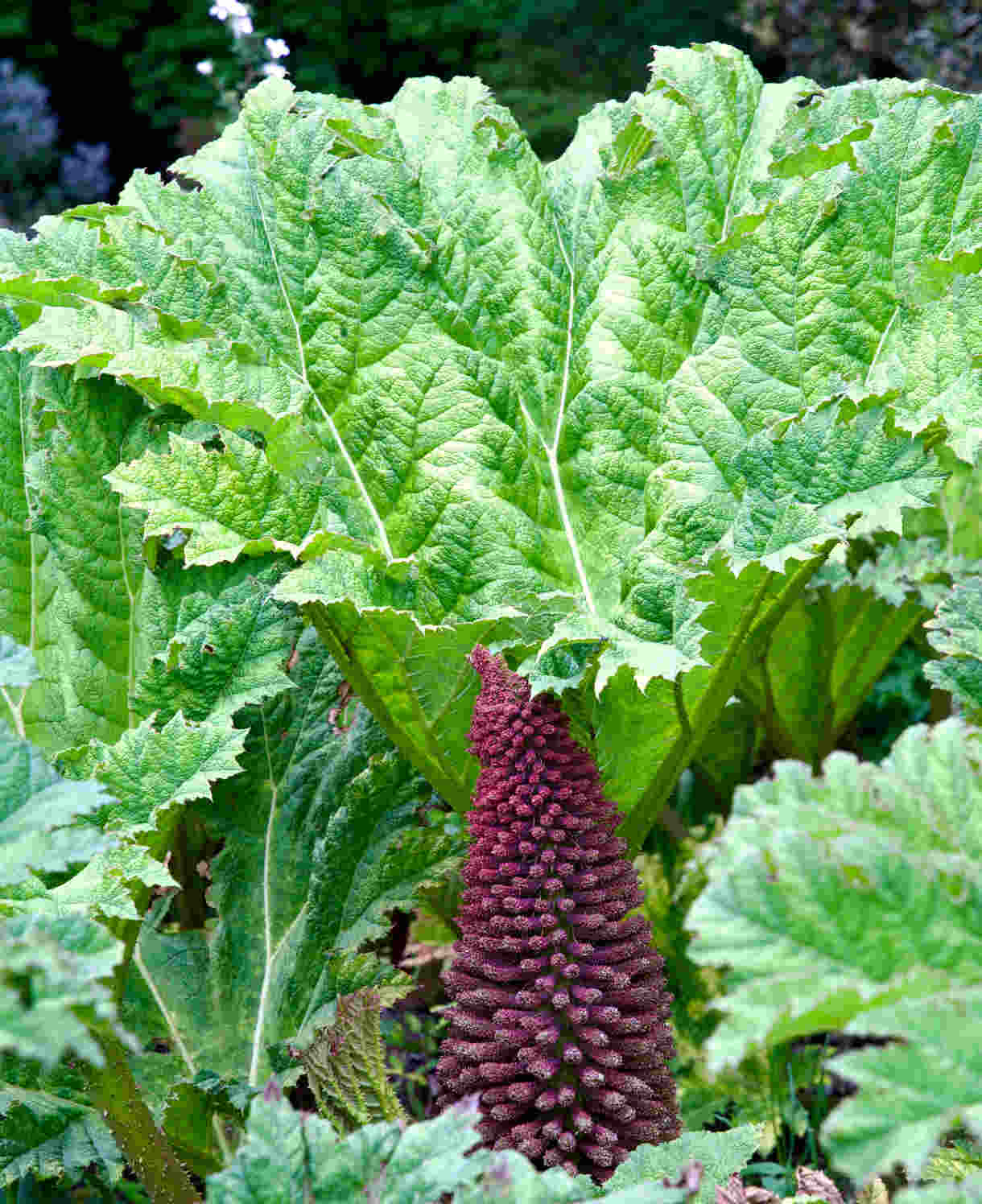
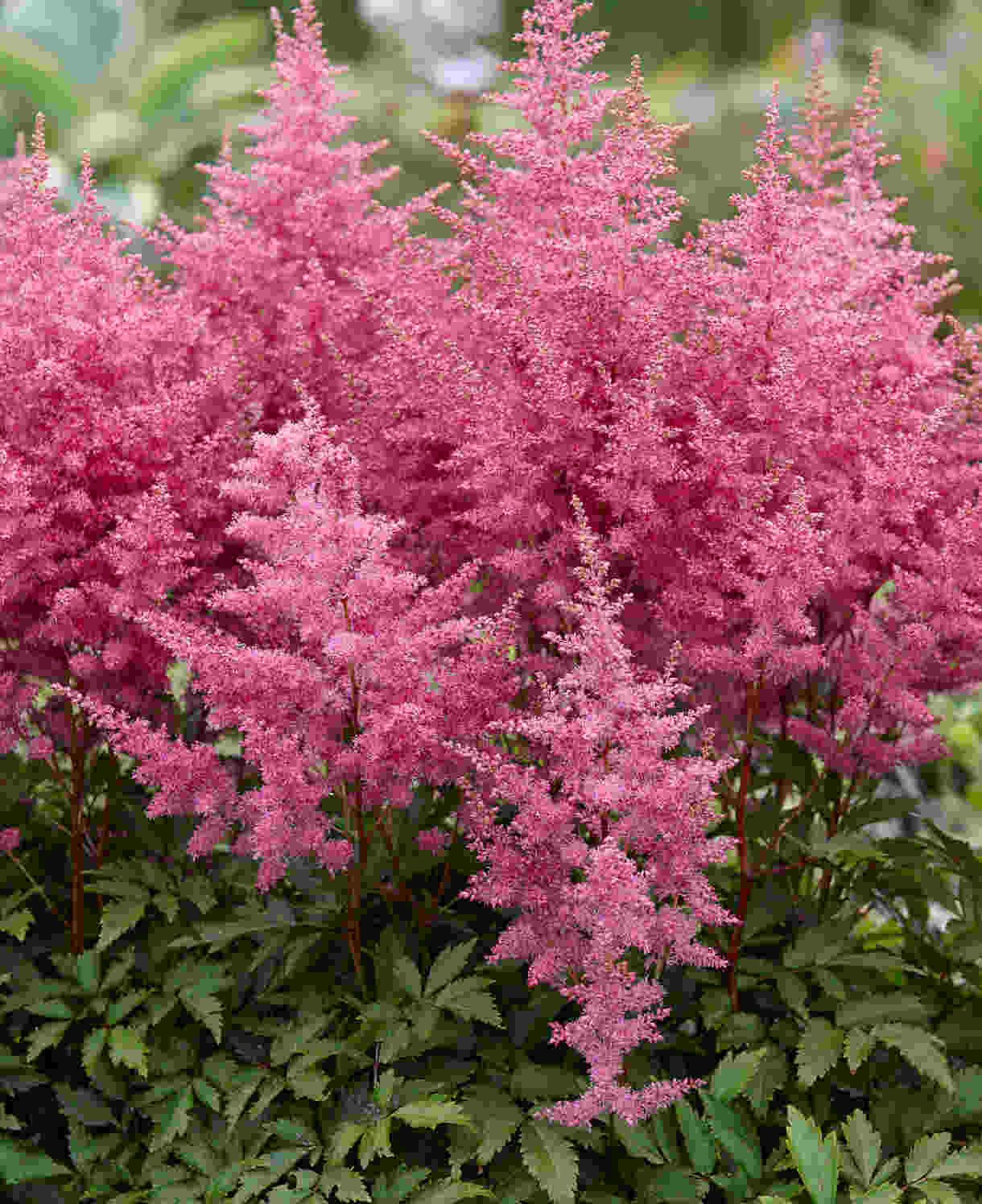
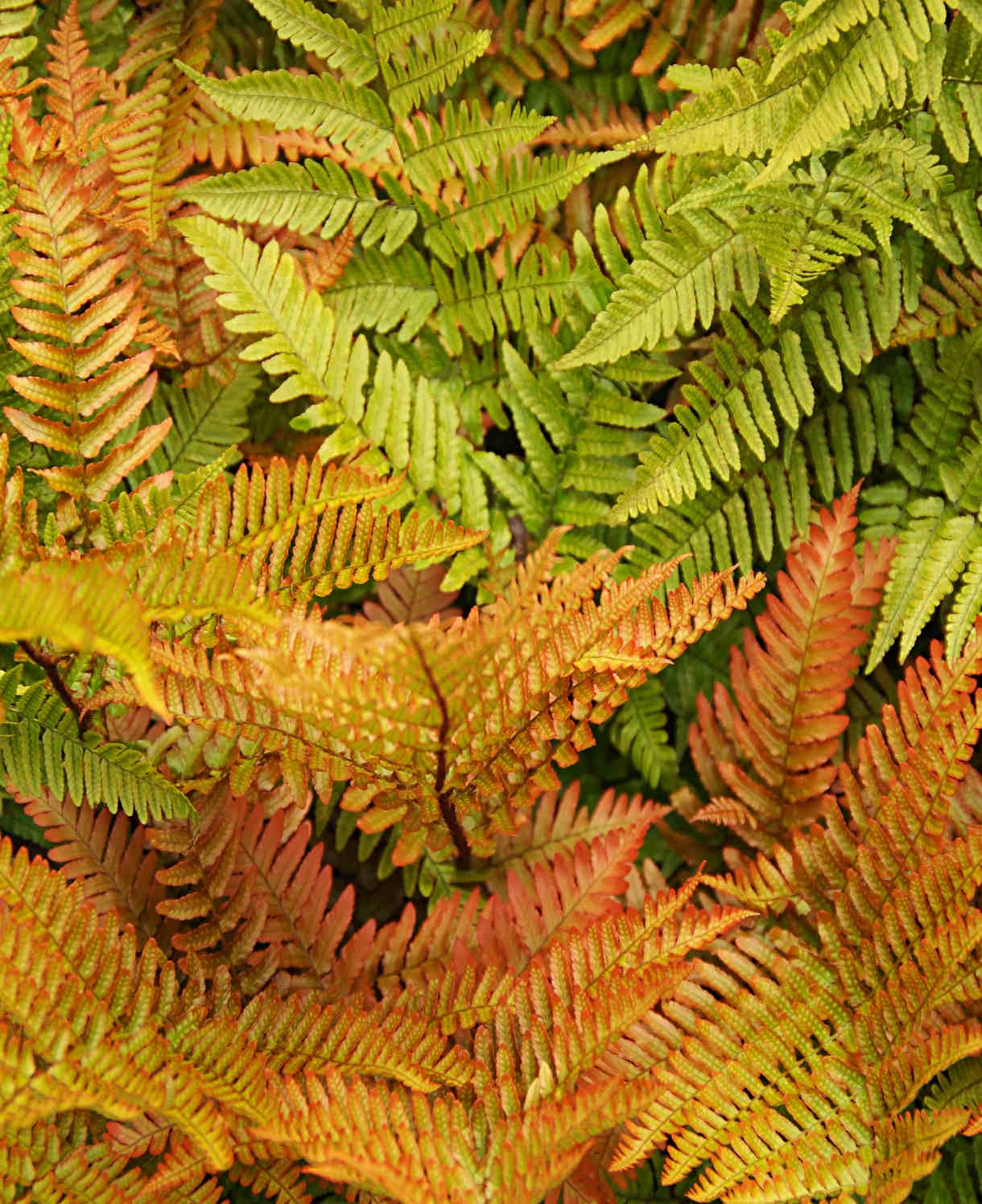
How to care for Sagittaria
Sagittaria sagittifolia are aquatic, tuberous perennials with foliage which emerges in March and dies back around September time - re-emerging again the following spring. Spent foliage should be removed before it rots and settles to the bottom of a pond but can be left to decompose on soil surfaces if desired.
Watering
In ponds no watering is necessary just ensure that water levels remain consistent in order to keep plants wet.
In bog gardens ensure soil remains wet, watering when weather is particularly hot or dry.
Pruning
Cut back stems after flowering as necessary and remove faded foliage from both the surface and the base of your pond.
Cold Protection
Not necessary as plants are hardy to -20°C (H6).
Pests and Diseases
Generally pest and disease free.
How to propagate Sagittaria
The quickest and easiest way to propagate Sagittaria sagittifolia is by division of established plants in early spring. Some plants may propagate naturally by stolons (which are modified runner stems). These can simply be dug up and relocated provided they have a good root structure attached to each node.
- Dig the plant, or a section of the plant, out of the ground or lift basket out of your pond.
- Shake off any excess soil/remove from basket.
- Separate the plant into sections by gently prising the clump apart – use two garden forks to prise apart if this is tricky with your hands.
- Discard old, damaged, or surplus pieces, keeping only the healthy, vigorous material.
- Replant decent-sized pieces where desired either in aquatic baskets or back into the wet soil.
- Water well and, if in an aquatic basket, top with gravel then lower into the pond as per planting instructions above.
* Many plants carry Plant Breeders Rights and cannot be propagated for commercial purposes.
Common Sagittaria Questions
How tall does sagittaria grow?
The variety we offer reaches a height of around 80cm with a spread of around 1m.
How fast does sagittaria grow?
It is a vigorous, herbaceous marginal or aquatic perennial which can be restricted by the use of a pond basket to prevent its roots spreading out too far.
How do you grow sagittaria carpet?
This requires a variety of Sagittaria known as Sagittaria subulata which is a dwarf form. We do not currently supply this.
